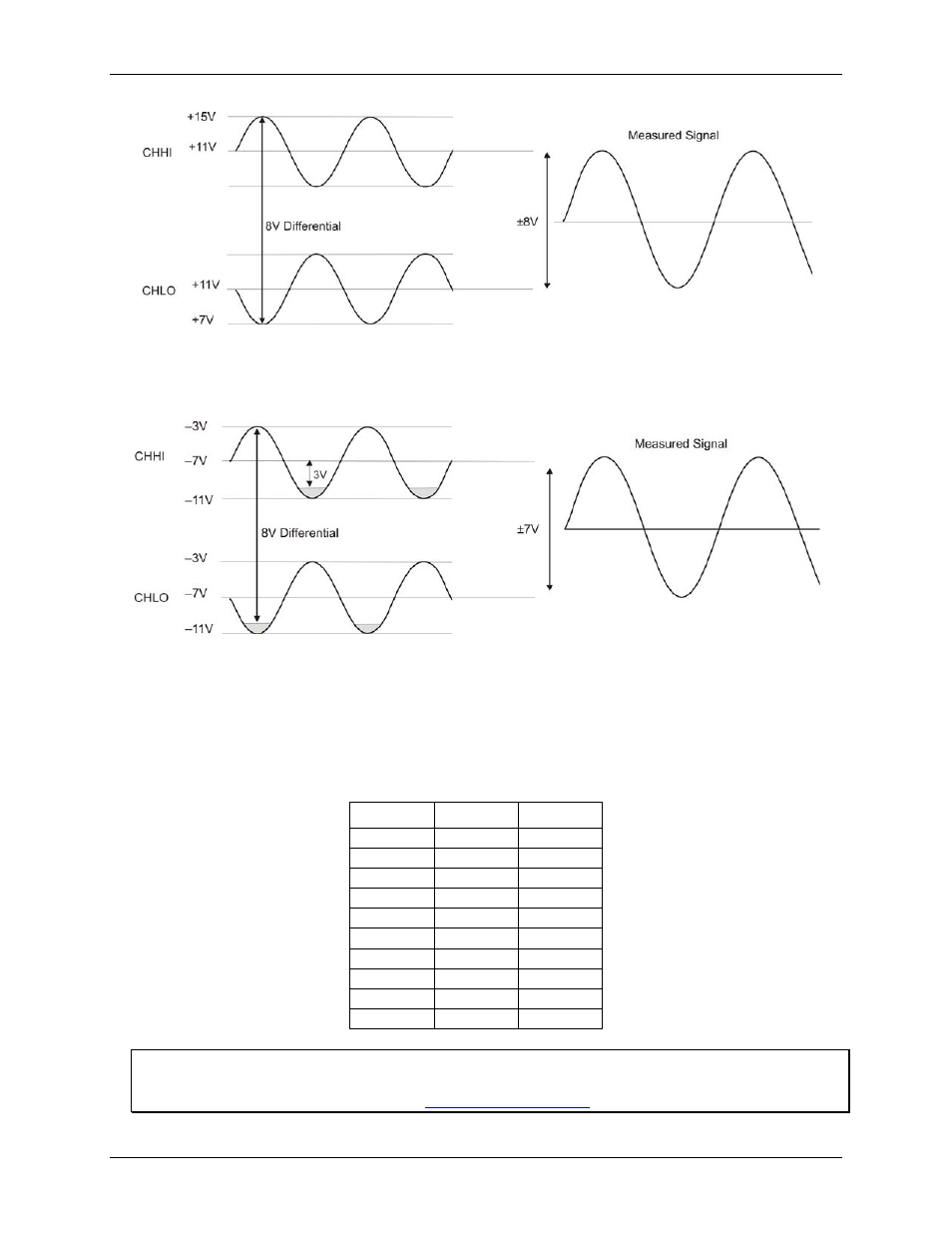Measurement Computing USB-1208FS User Manual
Page 13

USB-1208FS User's Guide
Functional Details
13
Figure 6. Differential voltage example: common mode voltage of 11 V
If you decrease the common-mode voltage to –7 V, the differential stays at ±8 V. However, the solution now
violates the input range condition of –10 V to +20 V. The voltage on each analog input now swings from –3 V
to –11 V. Voltages between –10 V and –3 V are resolved, but those below –10 V are clipped (see Figure 7).
Figure 7. Differential voltage example: common mode voltage of –7 V
Since the analog inputs are restricted to a
−10 V to +20 V signal swing with respect to ground, all ranges except
±20V can realize a linear output for any differential signal with zero common mode voltage and full scale signal
inputs. The ±20 V range is the exception. You cannot put
−20 V on CHHI and 0 V on CHLO since this violates
the input range criteria.
The table below shows some possible inputs and the expected results.
Sample inputs and differential results
CHHI
CHLO
Result
–20 V
0 V
Invalid
–15 V
+5 V
Invalid
–10 V
0 V
–10 V
–10 V
+10 V
–20 V
0 V
+10 V
–10 V
0 V
+20 V
–20 V
+10 V
–10 V
+20 V
+10 V
0 V
+10 V
+15 V
–5 V
+20 V
+20 V
0
+20 V
For more information on analog signal connections
For more information on single-ended and differential inputs, refer to the Guide to DAQ Signal Connections
(this document is available on our web site a